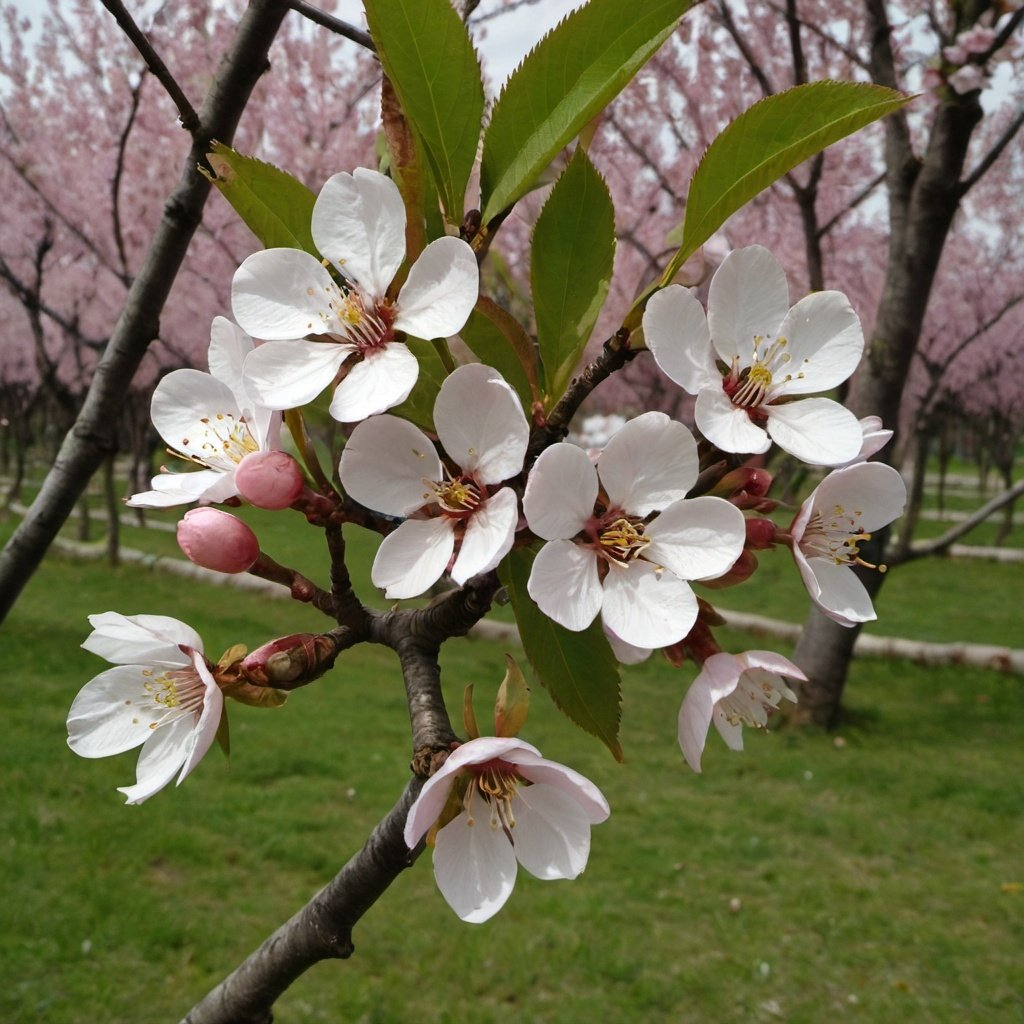Western Sand Cherry Seeds
Western Sand Cherry Seeds
Couldn't load pickup availability
Western Sand Cherry Seeds
(Prunus besseyi)
Prunus besseyi, commonly known as Western Sand Cherry, is a species of cherry native to North America. It typically grows in sandy soils and is known for its adaptability to various soil types and conditions.
Description
- Size: It is a small, deciduous shrub that usually reaches about 1 to 2 meters (3 to 6 feet) in height.
- Leaves: The leaves are oblong to lanceolate, with a glossy green appearance. They turn a striking red or orange in the fall.
- Flowers: In spring, it produces clusters of white flowers that are about 1.5 cm (0.6 inches) in diameter.
- Fruit: The plant bears small, dark purple to black cherries, which are edible and can be used in jellies and preserves.
Habitat and Growth
- Soil: Prefers sandy, well-drained soils but can tolerate various types.
- Sunlight: Thrives in full sun to partial shade.
- Water: It is drought-tolerant once established.
Uses
- Culinary: The cherries are tart but can be used in cooking and baking.
- Ornamental: Its attractive flowers and foliage make it a popular choice for ornamental planting.
- Wildlife: The plant provides food for birds and other wildlife.
Care Tips
- Pruning: Pruning after flowering can help maintain its shape and encourage healthy growth.
Zones: 3 to 7
Stratification Requirement: Seed requires 90 days cold stratification
Planting Instructions:
To start, Western Sand Cherry seeds need a period of cold stratification to break dormancy. Place the seeds in a plastic bag filled with moist sand, seal the bag, and store it in the refrigerator for about 90 days. After this stratification period, remove the seeds from the refrigerator and rinse them thoroughly to remove any remaining sand.
Next, prepare seed trays or pots with seed-starting mix or well-draining potting soil. Plant the seeds about 1/4 inch (0.6 cm) deep in the soil, spacing them at least 1-2 inches (2.5-5 cm) apart if using seed trays. Water the soil gently to ensure it is evenly moist but not waterlogged, and keep the soil consistently moist throughout the germination process.
To create a humid environment, cover the seed trays or pots with plastic wrap or a humidity dome. Place the trays or pots in a warm, sunny location or under a grow light. Germination can take several weeks, so be patient and maintain the soil's moisture. Once seedlings emerge, remove the plastic wrap or humidity dome to prevent fungal growth.
When the seedlings have developed a few sets of true leaves and are large enough to handle, transplant them into individual pots or a prepared garden bed. Ensure the garden bed or pots have well-draining soil and are in a sunny location. Continue to water the seedlings regularly, allowing the soil to dry slightly between waterings. Mulch around the base of the plants to retain moisture and control weeds. Protect young plants from extreme weather and pests.
With proper care and attention, your Western Sand Cherry seeds should grow into healthy sand cherry plants, providing beautiful flowers and fruit.
Share


